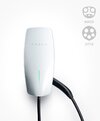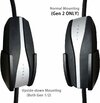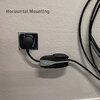You will be surprised that a lot of people who install a wall charger don't opt to buy a mobile charger as well for their car post April 2022. I think unless you opt to install a 60A breaker for your wall charger to get 48A charging, the difference between a 50A wall charger charging at 40A vs. mobile charger at 32A is not really significant and having a mobile charger gives you flexibility on the road. With the departure setting set and enabling off-peak charging it has more than enough time to charge overnight at off-peak hours at 32A no problem. If the Gen2 mobile charger had the same max charge rating as the gen1 mobile charger of up to 40A it makes it even more of a reason to get a mobile charger if you only planned to install a 50A breaker in your house.Of course. Install a wall charger for home and keep a mobile charger in the car for trips. It's unlikely to be an either / or choice for anyone at this vehicle's price point.
The outlet is the sticking point for many ... to do it up to code and with a good level of reliability is nearly as costly as the wall connector itself, but without any of the wall connector's benefits.
I still think it matters when it comes to the current owner of the house on whether they are planning to stay in the short term or long term. Having flexibility with a NEMA-14-50 plug if you move out is much easier to unplug your mobile charger than to figure out what you will do with 3 open wires when you disconnect your wall charger when you move. If someone moves in and has their own EVSE, most likely it would not be wired and using a NEMA 14-50 plug.
Last edited:








